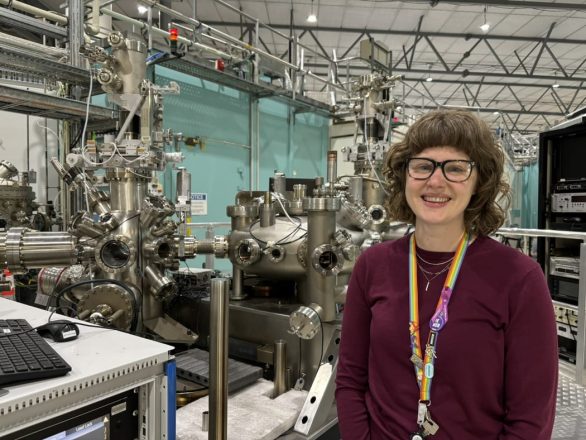在墨尔本的克莱顿郊区,澳大利亚同步加速器以其大型圆形设计脱颖而出。它的主要目的是生产用于科学研究的光。同步加速器是一种粒子加速器,可在真空室中以非常高的速度移动电子。
该过程从电子枪开始,电子枪产生电子,然后电子进入线性加速器获取能量,达到接近光速。接下来,电子进入助推环,在短短半秒内完成超过一百万圈,每圈获得能量。之后,电子移动到存储环,在那里它们使用大型磁铁弯曲方向,以光的形式释放能量。
管理显微镜光束线的艾米丽·芬奇博士将同步加速器称为 “科学甜甜圈”。产生的光被过滤并引导到光束线中,研究人员可以将其用于各种研究。科学运营经理海伦·布兰德博士鼓励人们询问研究课题,重点介绍了那里进行的广泛研究。
该设施的走廊里摆满了展示各种实验的海报。例如,一项研究揭示了一幅隐藏的德加斯画作,新西兰的一个研究小组分析了多刺岩龙虾中的元素。
目前,有14条活性光束线主要使用X射线光,每条都侧重于特定的研究问题。一条光束线侧重于 X 射线衍射以了解分子结构。
奥克兰大学的博士生本·克林克尔正在使用大分子X射线晶体学光束线研究一种可能的抗癌药物,测试了近100个晶体样本以确定该药物的工作原理。他的同事Shayhan Chunkath正在研究一种可能具有抗菌作用的微小蛋白质片段,并希望将其结构可视化。
为了确保安全,研究人员远程控制X射线测试,因为X射线可能很危险。新西兰研究人员可以通过2017年订立的合作协议访问同步加速器,允许他们申请研究时间和旅行补助金。
在过去的一年中,新西兰团队对同步加速器进行了113次访问,展示了各种各样的研究工作。更多细节将在下周公布。对这个故事的报道得到了新西兰同步加速器集团有限公司的支持。




























































